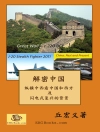This book is the first comprehensive analysis of Denmark’s solitary experiment with Indian indentured labor on St. Croix during the second half of the nineteenth century. The book focuses on the recruitment, transportation, plantation labor, re-indenture, repatriation, remittances and abolition of Indian indentured experience on the island. In doing so, Roopnarine has produced a compelling narrative on Indian indenture. The laborers challenged and responded accordingly to their daily indentured existence using their cultural strengths to cohere and co-exist in a planter-dominated environment. Laborers had to create opportunities for themselves using their homeland customs without losing the focus that someday they would return home. Indentured Indians understood that the plantation system would not be flexible to them but rather they had to be flexible to plantation system. Roopnarine’s concise analysis has moved Indian indenture from the margin to mainstream notonly in the historiography of the Danish West Indies, but also in the wider Caribbean where Indians were indentured.
قائمة المحتويات
.Introduction.- 1. Post-Emancipation St. Croix 1849-1878.- 2. Recruitment and Distribution of Indentured Indians.- 3. Typologies of Indentured Indians and Their Plantation Experience.- 4. Re-Indenture, Remittances and Reparation.- 5. A comparative analysis of East Indian on St. Croix (1863-1868) and British Guiana (1838-1843).- 6. Views and Voices on Indian Indenture on Danish St. Croix.- Conclusion.
عن المؤلف
Lomarsh Roopnarine is Professor of Caribbean and Latin American History at Jackson State University, USA. He received his Ph D in Latin American and Caribbean Studies from the University at Albany, USA and taught at the University of the Virgin Islands, St. Croix. He has published over three dozen articles in Caribbean history, society and environmental policy. He is currently writing a manuscript on Caribbean Indian Migration and Identity.












